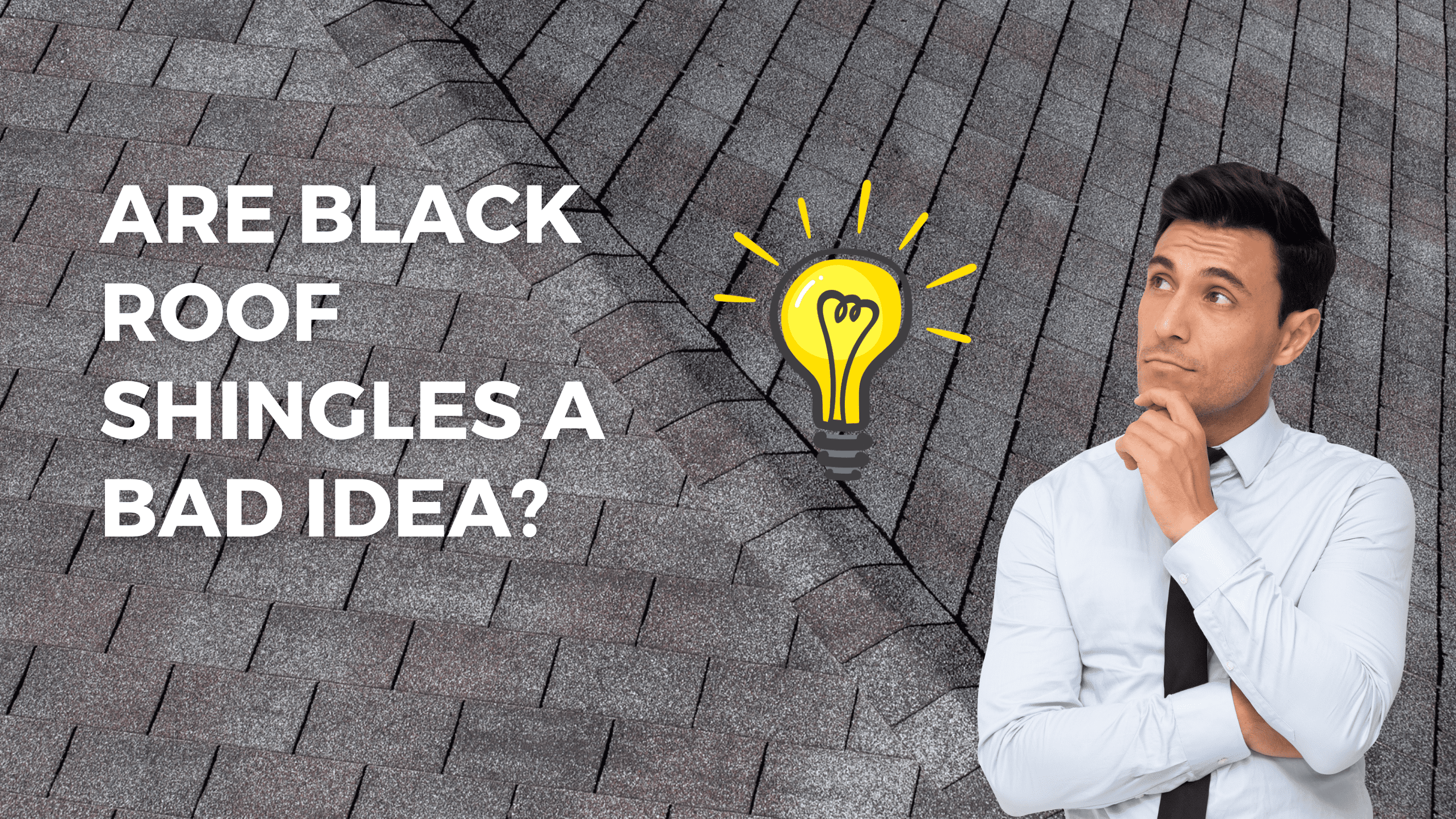As a homeowner or someone considering a new roof, you may have given a thought or two to black roof shingles. The decision depends on your situation, but don’t worry! I’m here to share key insights with you.
When it comes to choosing the right roof shingles, there are several factors to consider, like aesthetics, durability, and energy efficiency.
In this article, I’ll explore the pros and cons of black roof shingles to help you make the best possible choice.
Factors to Consider When Choosing Roof Shingles
First, let’s take a look at key factors to have on your mind as you review the pros and cons.
Climate
Do you live in a chilly climate? If so, black shingles might be a good choice since they retain heat.
However, if you live in a warm climate, you’re likely better off with light-colored shingles or cool roof technologies.
Architectural Style
Consider the design of your home. Would black roof shingles complement its overall look? Black shingles do work well with many different design styles, but what design are you really going for?
Basically, make sure you’ll actually like how they look.
Energy Efficiency
If you want to make your home more energy-efficient, black shingles might make it hard to reach that goal, depending on the climate you’re in.
Options like light-colored shingles may be more likely to help you save on energy costs.
Home Size
For the most part, smaller homes look better and larger when they have lighter-colored shingles. Black shingles could make a home look stuffy, depending on the house’s shape and size.
Maintenance Costs
What will your maintenance and roof replacement budget be? Are you willing to replace faded black shingles every so often?
You’ll definitely want to factor in possible repair costs before pulling the trigger.
Advantages of Black Shingles
Aesthetics
One of the main reasons people pick black shingles is their sleek, modern vibe. There’s no doubt that black shingles can give your home a timeless look and impress your visitors.
Plus, they’re versatile enough to suit different architectural styles. So if curb appeal is important to you, black shingles might be a great choice.
Heat Retention
Now, as I touched on earlier, colder climates are normally the best place to slap on black roof shingles. You see, they absorb and retain heat.
So, your home will stay warmer during those nippy winter months. This heat retention can lead to lower heating costs, and I think you’ll agree that saving money is never a bad thing!
Durability
Now, as you’ll see below, black shingles are not the most durable roofing type. However, they have a couple of pluses in the durability department.
For one, they’re less prone to algae and moss growth compared to lighter-colored shingles. Also, their dark color helps them hide imperfections longer.
In other words, they’re great at disguising signs of aging before you get them replaced or fixed.
Disadvantages of Black Shingles
Fading Over Time
Sadly, black shingles fade over time. Of course, this can impact your home’s neat appearance. They can’t hide their decay forever.
Eventually, the sun’s UV rays take a toll, and those shingles lose their deep black hue. Also, since they absorb a lot of heat, they tend to wear down faster than light-colored options.
So, you might have to replace your shingles more often than you would with a lighter-colored choice.
Environmental Concerns
Let’s also take a look at some environmental concerns with black roof shingles. Did you know some states or regions have environmental codes that actually restrict black roof shingles?
Now’s a good time for you to check on that.
But how exactly could they harm the environment? Well, the heat they absorb becomes part of the urban heat island problem, also called the UHI effect.
Basically, it’s when built-up areas get much warmer than the surrounding rural areas. This could make climate change worse and raise your home’s carbon footprint.
So, if you’re environmentally mindful, it’s something to think about.
Heat Absorption
I’ve saved the main disadvantage of black shingles for last, and that is heat absorption. Of course, it helps you out in colder climates, but it’s a drawback in warmer places.
The heat absorbed by black shingles can make your home hotter. You’ll have to crank up the air conditioning, leading to increased cooling costs.
That said, some roofing professionals out there have roofing technologies that help deter this side effect. One is using a special underlayment, which is basically laying down material on the roof before applying the shingles.
That can help with ventilation and protect your house from turning into a little oven. Higher-quality black shingles may also help with heat reflection and keep the roof a bit cooler.
Alternatives to Black Shingles
Let’s say you’ve weighed these pros and cons, and you realize black shingles are, in fact, a bad idea. What next? Luckily, you have plenty of other options available. Let’s take a look!
Light Shingles
One option is to go for light-colored shingles. They naturally have reflective properties to help keep your home cooler in warm climates.
Plus, light-colored shingles are more energy-efficient, so you can save on cooling costs.
Cool Roof Materials
Another choice is cool roof technologies. These innovative materials are made to reflect more sunlight and absorb less heat than traditional shingles.
They help reduce energy consumption and keep your home more comfortable during those hot summer months. So, it’s definitely worth looking into these energy-saving options.
Conclusion
To sum it up, black roof shingles have pros and cons. It’s essential to weigh these factors and think about things like climate, architecture, energy efficiency goals, and maintenance costs as you make your choice.
Ultimately, the choice is yours. I do encourage you to talk to a few roofing professionals who can help you understand the best options for you.
With their help, you can make a wise choice and feel confident and excited about the shingles you pick.

